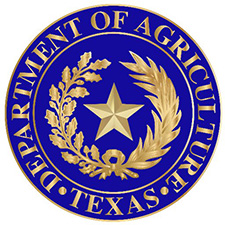Fewer hog farms, but far more hogs per farm
In the space of a generation, U.S. hog production has transformed, even if the Midwest, with Iowa foremost, is still the leader, said a new USDA report. There were half as many hog farms in the country in 2017 as there were in 1997, and the largest farms, often specialized operations, raised 93 percent of the pigs.
Bird flu slashes egg and turkey exports
While beef and broiler meat exports surged in the first half of this year, egg exports plummeted 38 percent, turkey 20 percent and pork 18 percent, said USDA economists. Eggs and turkeys “were negatively impacted by the outbreak of highly pathogenic avian influenza (HPAI), according to the Livestock, Dairy and Poultry Outlook, issued monthly.
TODAY’S QUICK HITS
Pipelines complicate politics: Iowa labor unions might back the Republican candidate in a state Senate race over the Democrat who opposes carbon-capture pipelines. It’s the latest sign of how Iowa’s love of ethanol scrambles political alignments. (Cedar Rapids Gazette)
Deere sales bound upward: Deere and Co., the world’s largest farm equipment maker, said net sales during the third quarter of its fiscal year were 25-percent higher than the same period in 2021, despite higher production costs and “the difficult supply-chain situation.” (Deere)
UFW march to Sacramento: Members of the United Farm Workers are staging a three-week march to the state Capitol with a dual purpose: to support a bill affecting unionization balloting and to show the new vibrancy of the farmworker movement. (Los Angeles Times)
Alaskan snow crabs vanish: The cause of a sudden collapse in the Alaskan snow crab population in the Bering Sea is unclear, but a NOAA scientist says the possibilities include an extreme heat wave in 2019, or perhaps there was a “large mortality event.” (Washington Post)
Most say food is affordable: Despite the highest food inflation rate in years, 58.9 percent of consumers said in a survey earlier this month that U.S. food is affordable, only slightly changed from the 59.1 percent in a May survey. (farmdoc daily)
ON THE CALENDAR
Monday
Agriculture Secretary Tom Vilsack and Agriculture Undersecretary Jenny Moffit announce details of the new organic transition program, which helps growers shift to organic production from conventional farming. 11:30 a.m. ET.
USDA releases monthly Cold Storage report, 3 p.m. ET.
USDA releases weekly Crop Progress report, 4 p.m. ET.
Tuesday
Agriculture Secretary Tom Vilsack announces “significant new funding” for biofuels infrastructure to bolster the availability of homegrown biofuels, 11:30 a.m. ET, LeRoy, Illinois.
Wednesday
Farm Credit Council holds Risk 360 conference, through Friday, Nashville.
USDA releases semiannual U.S. and Canadian Cattle and U.S. and Canadian Hog reports, 3 p.m. ET.
Thursday
UN Ambassador Linda Thomas-Greenfield speaks to the Chicago Council on Global Affairs on how to tackle the global food security crisis, 11 a.m. ET, Chicago. The event will be webcast.
House Oversight subcommittee hearing, “Effective environmental enforcement: Tools and strategies to protect vulnerable communities,” 10 a.m. ET, Wayne County Community College eastern campus, Detroit.
USDA releases monthly Food Price Outlook, 9 a.m. ET. At present, food prices are forecast to rise 9 percent this year compared to prices during 2021, the largest increase since 11 percent in 1979. The 20-year average for food prices is 2.4 percent annually.
Opening day of Minnesota State Fair, through Sept. 5, St. Paul.
Friday
Opening day of Nebraska State Fair, through Sept. 5, Grand Island, Nebraska.
USDA releases annual Mushrooms report, 3 p.m. ET.











